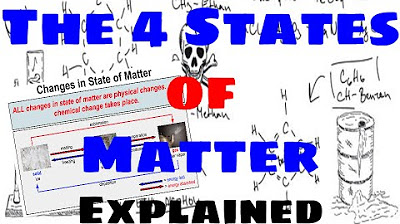APES Notes 1.6 - Phosphorus Cycle
Summary
TLDRIn this educational video, Mr. Smeeds explores the phosphorus cycle, highlighting its slow pace compared to the carbon and nitrogen cycles. He explains the movement of phosphorus from rocks and sediments through weathering and water transport. Phosphorus, essential for life due to its role in ATP and DNA, is often a limiting nutrient in ecosystems. The video also addresses human impacts, such as mining for phosphates and the subsequent risk of eutrophication, which can lead to algal blooms and dead zones in water bodies.
Takeaways
- 🔄 The phosphorus cycle involves the movement of phosphorus between sources and sinks, similar to the carbon and nitrogen cycles.
- 💠 Major reservoirs of phosphorus are rocks and phosphorus-containing sediments, which release phosphorus slowly through weathering.
- 🌬️ The phosphorus cycle is much slower than the carbon and nitrogen cycles due to the lack of a gaseous form of phosphorus and the slow process of weathering.
- 🌱 Phosphorus is a limiting nutrient in ecosystems because its release from rocks and sediments is a slow process, affecting plant growth and availability for organisms.
- 🌿 Plants absorb phosphorus from the soil, and animals obtain it by consuming plants or other animals, creating a mini nutrient cycle within ecosystems.
- 🔗 Both natural processes like weathering and human activities such as mining contribute to the availability of phosphorus in the environment.
- 🚜 Human-made sources of phosphorus, like synthetic fertilizers and detergents, can lead to eutrophication when they enter water bodies through runoff.
- 🌊 Eutrophication, caused by excess nitrogen and phosphorus, results in algal blooms that can block sunlight and deplete oxygen in water bodies, harming aquatic life.
- 🐟 The death of aquatic plants and algae due to lack of sunlight and oxygen leads to a positive feedback loop where decomposition uses up more oxygen, creating dead zones.
- 🏞️ Geological processes like sedimentation and uplift play a role in the phosphorus cycle by forming new sedimentary rocks and exposing them to weathering.
Q & A
What is the phosphorus cycle?
-The phosphorus cycle refers to the movement of phosphorus-containing elements between sources and sinks, similar to the carbon and nitrogen cycles.
What are the two major reservoirs of phosphorus?
-The two major reservoirs of phosphorus are rocks and phosphorus-containing sediments.
Why is the phosphorus cycle considered to be extremely slow?
-The phosphorus cycle is slow because phosphorus is released very slowly from rocks and sediments through a process called weathering, and there is no gas form of phosphorus, which means it must move in solid form.
How does phosphorus get released from rocks?
-Phosphorus is released from rocks through the process of weathering, where wind and rain break down the rock and release phosphorus in the form of phosphate.
What is the role of phosphorus in ecosystems?
-Phosphorus is often a limiting nutrient in ecosystems because of its slow cycle. It is essential for all organisms as it is a key element in ATP, DNA, and provides strength for bones and teeth in many animals.
How do humans contribute to the phosphorus cycle?
-Humans contribute to the phosphorus cycle by mining phosphate-containing rocks and adding phosphates to synthetic fertilizers, detergents, and cleaners.
What is eutrophication and how does it relate to the phosphorus cycle?
-Eutrophication is a problem that occurs when a body of water receives too much nitrogen and phosphorus, leading to excessive growth of algae, which can block sunlight and deplete oxygen in the water, creating dead zones.
How does phosphorus move from terrestrial ecosystems to aquatic ecosystems?
-Phosphorus moves from terrestrial ecosystems to aquatic ecosystems through runoff, which carries phosphates from the soil into bodies of water.
What is sedimentation in the context of the phosphorus cycle?
-Sedimentation in the phosphorus cycle is the process where phosphate precipitates out of water and forms solid phosphate sediments at the bottom of a body of water.
How does geological uplift affect the phosphorus cycle?
-Geological uplift, where tectonic plates collide and force new rock layers to form mountains, exposes new rock to weathering, restarting the weathering process and the release of phosphorus.
What is the significance of the phosphorus cycle for plant growth?
-The phosphorus cycle is significant for plant growth because phosphorus is a limiting nutrient that plants absorb from the soil, which is essential for their development and energy production.
Outlines

このセクションは有料ユーザー限定です。 アクセスするには、アップグレードをお願いします。
今すぐアップグレードMindmap

このセクションは有料ユーザー限定です。 アクセスするには、アップグレードをお願いします。
今すぐアップグレードKeywords

このセクションは有料ユーザー限定です。 アクセスするには、アップグレードをお願いします。
今すぐアップグレードHighlights

このセクションは有料ユーザー限定です。 アクセスするには、アップグレードをお願いします。
今すぐアップグレードTranscripts

このセクションは有料ユーザー限定です。 アクセスするには、アップグレードをお願いします。
今すぐアップグレード関連動画をさらに表示

The Four States of Matter - Explained

Lab Equipment - Explained

3. Gr 11 Life Sciences - Population Ecology - Theory 3 Mark Recapture Method

4. Gr 11 Life Sciences - Population Ecology - Worksheet 1

PENJASKES KELAS X - SOFTBALL

Introduction to Culture [AP Human Geography Review Unit 3 Topic 1]

Menentukan Mr ( massa molekul relatif )
5.0 / 5 (0 votes)
